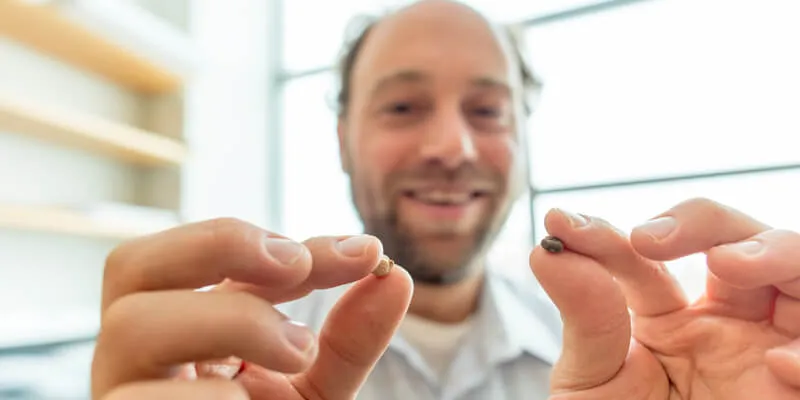Spending Spring Break in Russia studying seeds gathered throughout the world, Assistant professor Eric Bishop-von Wettberg was able to experience what no other professor had done before at UVM. Von Wettberg of Plant and Soil Sciences recently visited one of the world’s oldest and largest gene banks, known as the Pavlovsk Experimental Station, located in St. Petersburg, Russia. This station was created by famed agricultural geneticist Nikolai Vavilov, who sought to gather and preserve the genetic diversity of crop seeds from across the world. Fascinated by the genetic diversity of crop wild relatives for their disease resistance and drought tolerance, von Wettberg has focused his research on legumes, bean family plants, such as chickpeas, peas, and mungbeans.
Access to this gene bank is advantageous for Vermont because our climate is not that dissimilar from Russia’s. This visit was the first step to understanding the diversity for a crop called the mung bean. Although the mung bean isn’t yet a popular crop here in Vermont, it is a compliment to chickpea for farmers in sub-tropical regions across the world. For example, von Wettberg adds that “Chick peas grow best when the weather is cool and dry. In India, you can grow up to three crops a year in one field so in the cooler, but drier, winter season they will plant one, and then during the hotter monsoon season, they will plant something else, such as the mung bean. As climate change gets worse, Vermont will also need to grow heat tolerant legumes like mungbean that have a short duration.” Von Wettberg also adds that there is a lack of research concerning legumes used as sprouts, such as mung bean. Each year we are importing over one million pounds of mung bean from China because the US isn’t growing enough of them. Visiting this gene bank can help fuel research to learn more about how the mung bean can expand US agricultural practices, and to give farmers more warm season choices.
A career-long dream come true, von Wettberg hopes to go back soon with plans to create a study abroad program visiting gene banks around the world such as the Pavlovsk Experimental Station as well as gene banks in the UK, India, and Taiwan. He says the best part of his trip was giving a talk in that was simultaneously translated into Russian next to a statue of Nikolai Vavilov. The next steps von Wettberg hopes to take is to use this information from the gene bank to pursue the mung bean in the United States, as well as build vibrant international partnerships.
